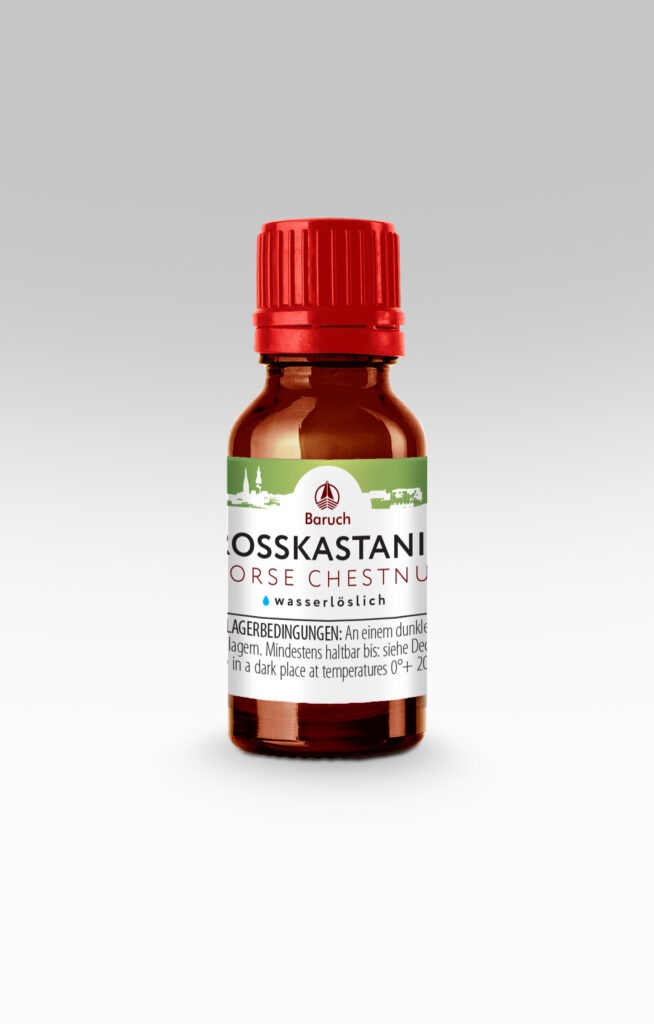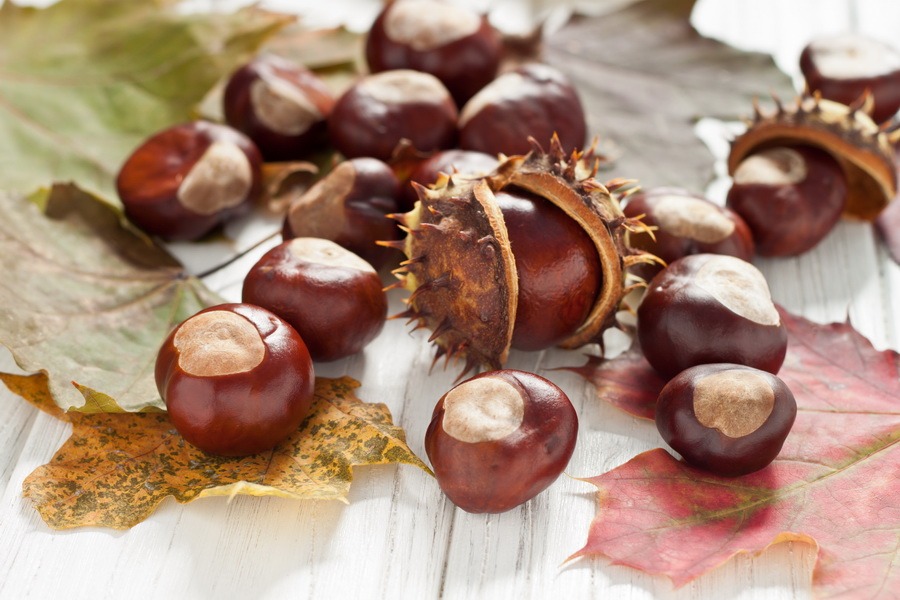The horse-chestnut is not related to the real chestnut. It was only called chestnut because the inedible fruits of a horse chestnut look very similar to the edible fruits of a real chestnut. The common horse chestnut is also called European horsechestnut, buckeye and conker tree.
The fruits have very valuable medicinal properties. If we evaluate the effect of aesculus extracts in general, then we have to speak of very strong venotonic, vascular-strengthening, antithrombotic properties. If we take a closer look at the medicinal properties of the horse-chestnut, it shows its activity in the fight against tissue edema and inflammatory processes. Reduces blood clotting, improves blood circulation, lowers blood pressure, dilates blood vessels, normalizes blood cholesterol, relieves cramps and pain. In small doses, it normalizes the acidity of gastric juice, normalizes the functioning of the gallbladder, restores the digestive process and stabilizes the functioning of the liver and heart.
Horse-chestnut fruits are considered to be slightly poisonous, so consumption and their extracts are not recommended. However, such extracts are often added to the formulations of biologically active food additives intended for the prevention of vascular diseases and thrombophlebitis.
CO2 extract from horse chestnut fruits is an oily liquid from light yellow to brownish-yellow in color with a characteristic faint odor.


Chart 1. Main components of the horse-chestnut CO2 extract
| NAME | CONTENT IN% OF THE AMOUNT OF VOLATILE COMPONENTS | EFFECT |
|---|---|---|
| Escin | 10 | Reduces blood viscosity, increases venous tone, removes venous congestion and strengthens the walls of blood vessels. |
| Esculin | 8 | Reduces the permeability of the capillary walls, increases the antithrombotic properties of blood serum and the production of antithrombin, accelerates blood circulation in the veins, promotes vasodilation. It stabilizes the central nervous system, has a mild diuretic effect, dilutes and eliminates mucus. |
| Fraxin | 5 | Activates the production of adrenal hormones, eliminates puffiness. |
| Querticin | 3 | Shows the properties of vitamin P, with hypo- and avitaminosis, antispasmodic, anti-inflammatory, antioxidant, diuretic, antitumoral, strengthens small vessels, antiallergenic, recommended for measles, scarlet fever, typhoid. |
| Quercitrin | 3 | Diuretic, antispasmodic, hypertensive, antiviral. |
| Coumarins | 1 | Stop the growth of tumor cells, accelerate wound healing, reduce blood clotting and the risk of thrombus formation. |
| Palmitic acid | 1 | Unsaturated fatty acid for water repellency in cosmetics. |
| Linoleic acid | 20 | An essential unsaturated fatty acid of the omega-6 class. It has anti-inflammatory, vasoconstrictor, and aggregating effects. If there is no balance between omega-3 and omega-6 fatty acids, competitive processes can arise that influence the metabolism. |
Horse-chestnut fruit extracts are widely used in formulations of cosmetics intended for the following purposes:
- Eliminate irritation and inflammation
- Removal of puffiness, including under the eyes
- in the means of combating rosacea
- stop the growth of tumor cells, accelerate wound healing, reduce blood clotting and reduce the risk of thrombus formation
- in anti-cellulite preparations and massage creams
- in creams to smooth the skin and remove fine lines
- in anti-aging cosmetics
The horse-chestnut began to spread in Greece and the Balkans, it is now grown as an ornamental tree in almost all of Europe, Southeast and Central Asia and is found in North Africa.
Chart 2. Application rates, recommendations for the use and storage of horse-chestnut CO2 extract
| Food usage rates | Not used in food |
| Application rates in cosmetics | Item А10: 1-3% Item А100: 0.1-0.3% Item EMA1 (water soluble microemulsions): 10-30% Item EMA5 (water-soluble microemulsions): 2-6%I |
| Recommendations for use | It is recommended to add CO2 extracts in the final stages of preparation, in the cooling phase of the end product. |
| Storage Instructions | Storage advice |
| Use in dietary supplements | Application in cooking | Application in cosmetics |
| It has very strong venotonic, vasoconstrictive, antithrombotic properties. It is active in the fight against tissue edema and inflammatory processes. Reduces blood clotting, improves blood circulation, lowers blood pressure, dilates blood vessels, normalizes blood cholesterol, relieves spasms, relieves pain, normalizes the acidity of gastric juice, normalizes the gallbladder, restores the digestive process, stabilizes the functioning of the liver and Heart. Acts against the growth of tumor cells, accelerates wound healing and helps reduce blood clotting. | It is not recommended to be used in food. | It is recommended to be included in the formulations of cosmetic products to relieve irritation and inflammation, reduce puffiness, including under the eyes, anti-rosacea products, anti-cellulite preparations and massage creams, skin smoothing creams and to eliminate fine wrinkles and to use in anti-aging cosmetics. |
